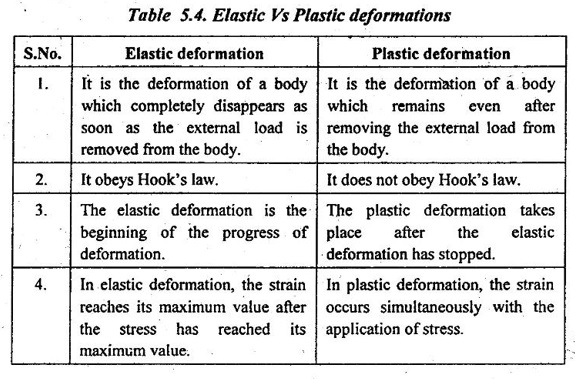When force is applied on a metal piece, then the size and/or shape will be altered.
DEFORMATION OF METALS
1. Introduction
✔ When force is applied on a metal piece, then the size and/or shape will be altered. Any changes in the size and/or shape of - the metal is called as deformation of the metal.
✔ Deformation is caused either by the mechanical action of external forces or by various physical and physiochemical processes. For example, changes in volume of separate crystallites in phase transformations are as a result of temperature gradient.
✔ The deformation can be either permanent or temporary. Permanent deformation remains after the removal of the deforming force or applied load, while temporary deformation disappears on removal of the load.
✔ The knowledge of the mechanical deformation of metals is essential to understand and obtain the desired shape/size of the end products through the various mechanical operations such as rolling, forging, drawing, etc.
2. Classification of Metal Deformation
Based on the nature of strain produced during deformation, the deformation of metals can be classified into :
1. Elastic deformation, and
2. Plastic deformation.
1. Elastic Deformation
✔ Elastic deformation is the deformation of a body which completely disappears as soon as the external load is removed from the body.
✔ In other words, the deformation which is fully recoverable and virtually time independent is called elastic deformation.
✔ This deformation type obeys Hook's law.
✔ Besides, there are elastomeric deformations and anelastic deformations which exhibit somewhat elastic deformations but do not obey the Hook's law.
2. Plastic Deformation
✔ Plastic deformation is the deformation of a body which remains even after removing the external load from the body.
✔ The plastic deformation in crystalline materials occurs at temperatures lower than 0.4 Tm, where Tm, is the melting tempe- rature of the material.
✔ In contrast to elastic deformation, which depends primarily on stress in the simplest cases, plastic deformation is a function of stress, temperature, and the rate of straining.
✔ The plastic deformation may occur under the tensile, compressive or torsional stresses.
✔ This property of plastic deformation makes the metal suitable for various forming processes such as rolling, forging, pressing, drawing, spinning, extrusion and stamping.
3. Elastic Vs Plastic Deformations
The comparison between elastic and plastic deformations is presented in Table 5.4.

No comments:
Post a Comment